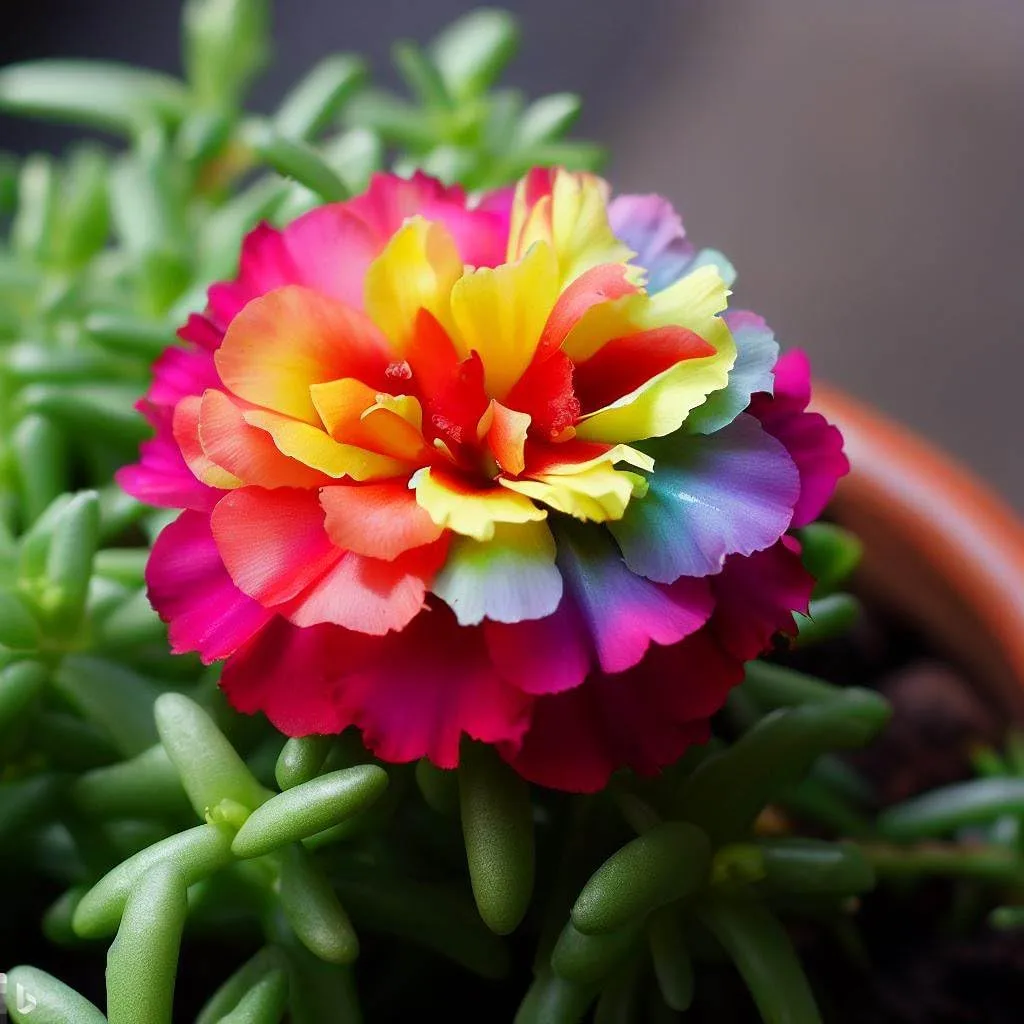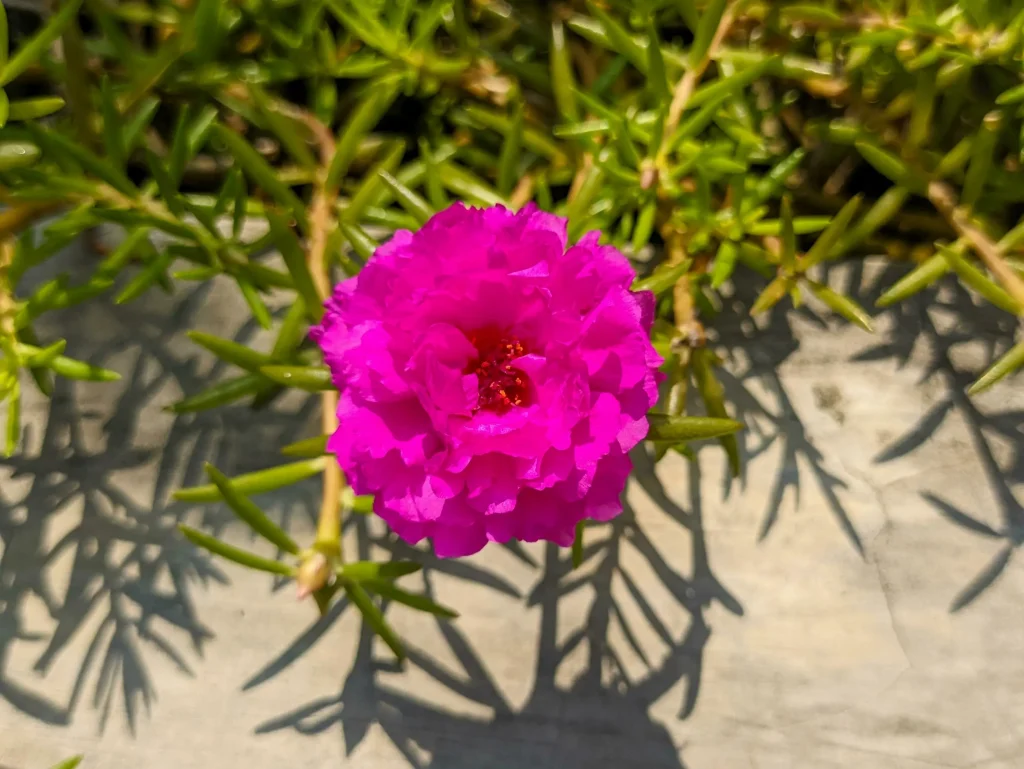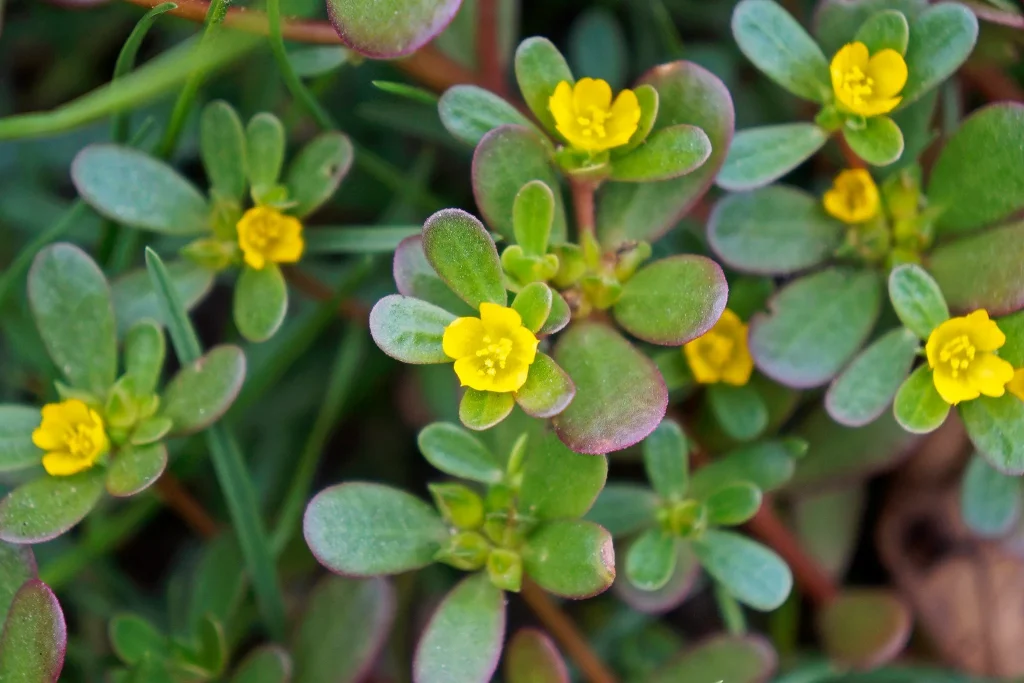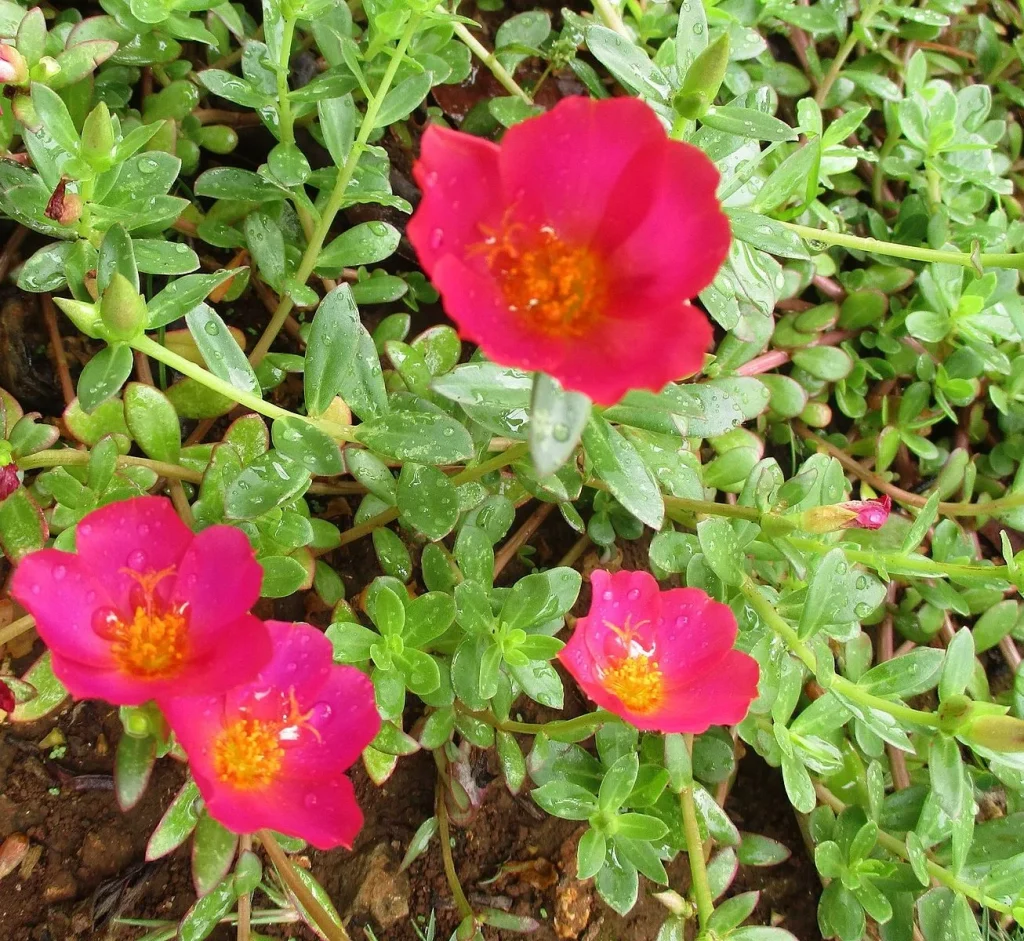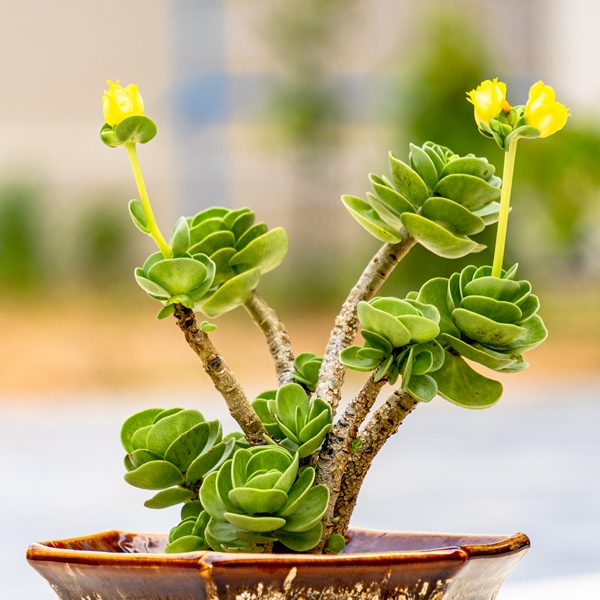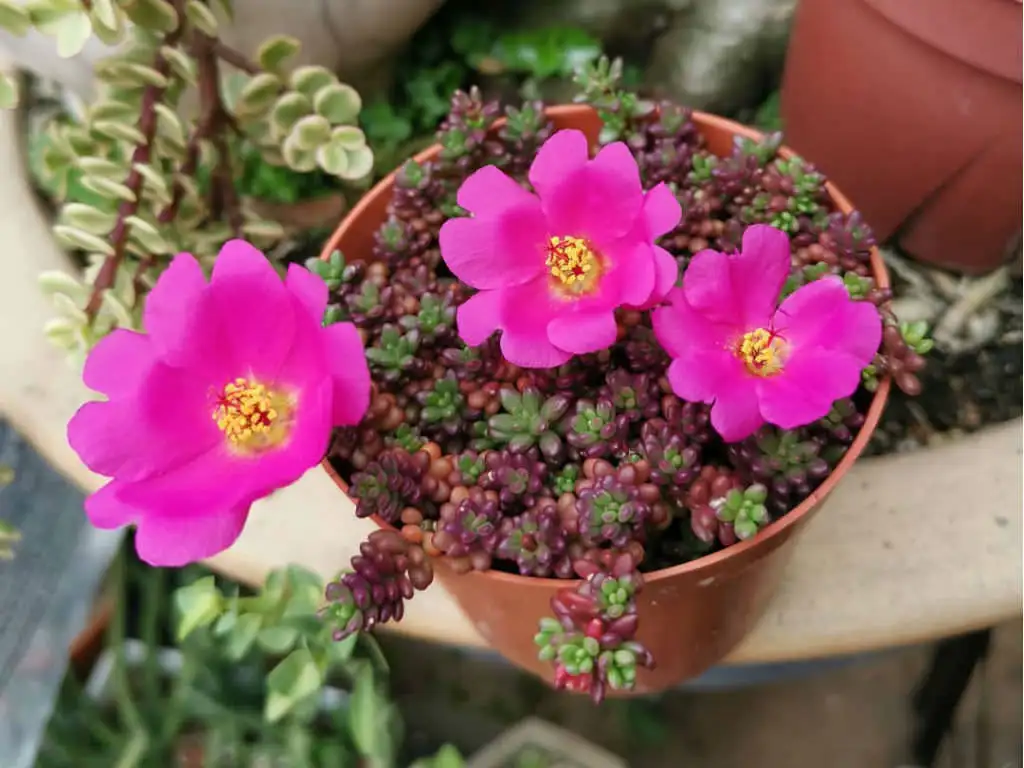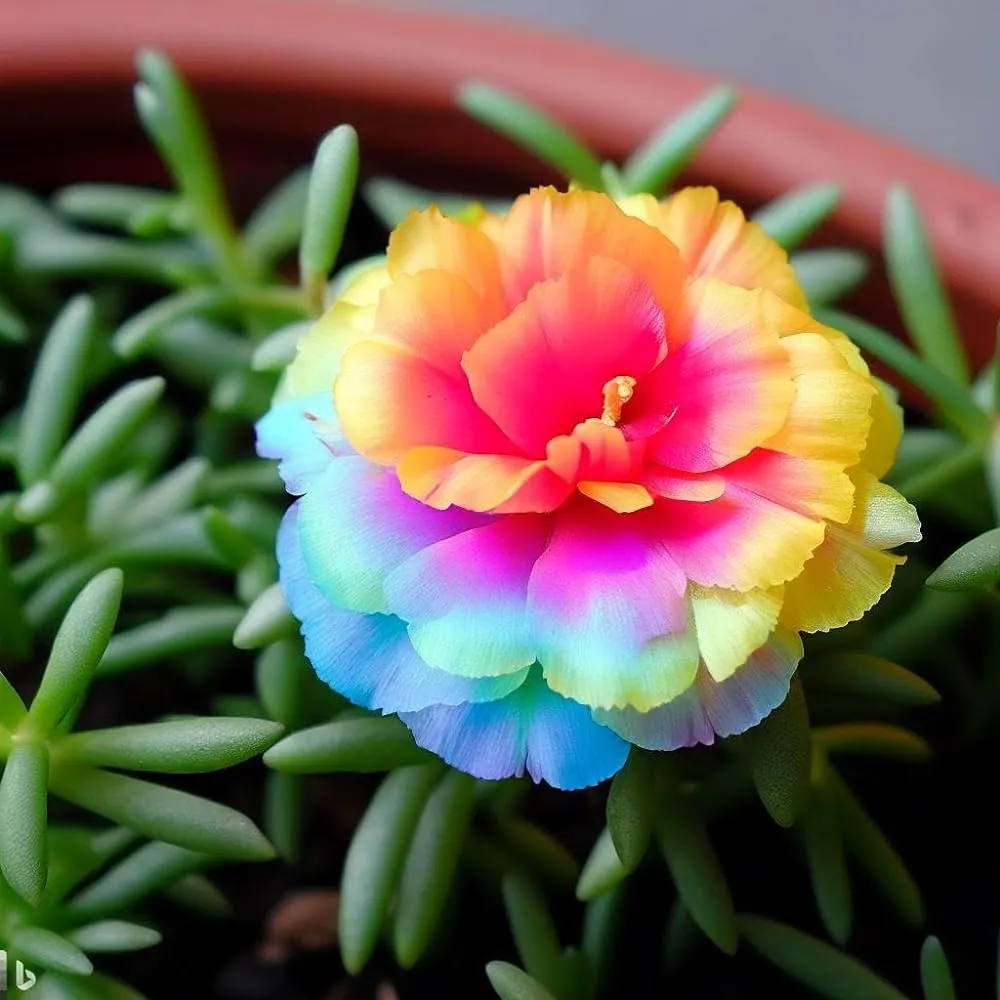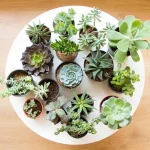Portulaca Flower: Full Care Guide
1. Sunlight:
Portulaca thrives in full sunlight, requiring at least 6-8 hours of direct sunlight each day. Ensure that they are planted in a location that receives ample sun exposure for optimal growth and blooming.
2. Soil:
Portulaca prefers well-draining, sandy or loamy soil. Avoid heavy clay soils that retain water, as this can lead to root rot. If necessary, amend the soil with sand or per lite to improve drainage.
3. Watering:
Water the plant sparingly. Portulaca is drought-tolerant and does not require frequent watering. Allow the soil to dry out completely between watering. Over watering can cause root rot and other fungal diseases.
4. Fertilisation:
Portulaca is a low-maintenance plant and typically does not require regular fertilisation. However, to promote vigorous growth and flowering, you can apply a balanced, slow-release fertiliser once in the growing season.
5. Pruning:
Deadheading, or removing spent flowers, encourages continuous blooming. Regularly trim back any leggy or overgrown stems to maintain a compact and attractive shape.
6. Pests and Diseases:
Portulaca is generally pest-resistant, but it can occasionally be affected by aphids or spider mites. Inspect the plants regularly and treat infestations with insecticidal soap or Neem oil. Ensure good air circulation around the plants to prevent fungal diseases.
7. Temperature and Humidity:
Portulaca prefers warm temperatures and low humidity. It can tolerate heat and dry conditions, making it ideal for arid and semi-arid regions. Protect the plants from frost, as they are sensitive to cold temperatures.
8. Propagation:
Portulaca can be easily propagated from seeds or cuttings. Sow seeds directly in the garden after the last frost, or take stem cuttings and root them in moist soil. Both methods are effective in establishing new plants.
By following these care guidelines, you can enjoy the vibrant and resilient beauty of Portulaca flowers in your garden throughout the growing season.
Portulaca Flower: Common Diseases and Solutions
1. Root Rot:
- Symptoms: Yellowing leaves, wilting, and stunted growth.
- Cause: Over watering or poor drainage.
- Solution: Ensure well-draining soil, avoid over watering, and allow the soil to dry out between watering. Use raised beds or containers with drainage holes if necessary.
2. Powdery Mildew:
- Symptoms: White, powdery fungal growth on leaves and stems.
- Cause: High humidity and poor air circulation.
- Solution: Increase air circulation by spacing plants appropriately, water at the base of the plant to keep foliage dry, and apply fungicides if necessary.
3. Rust:
- Symptoms: Orange or reddish-brown pustules on the undersides of leaves.
- Cause: Fungal infection in warm, humid conditions.
- Solution: Remove and destroy infected leaves, improve air circulation, and use fungicides to control the spread of the disease.
4. Aphids:
- Symptoms: Sticky residue on leaves, curled or distorted foliage, and stunted growth.
- Cause: Small sap-sucking insects.
- Solution: Spray with insecticidal soap or neem oil, encourage beneficial insects like ladybugs, and regularly inspect plants for early detection and treatment.
5. Spider Mites:
- Symptoms: Fine webbing on the plant, yellow or bronze discoloration of leaves, and leaf drop.
- Cause: Tiny spider-like pests thriving in hot, dry conditions.
- Solution: Increase humidity around the plant, spray with insecticidal soap or neem oil, and introduce natural predators like predatory mites.
6. Leaf Spot:
- Symptoms: Brown or black spots on leaves, which may lead to leaf drop.
- Cause: Bacterial or fungal pathogens.
- Solution: Remove and destroy affected leaves, avoid overhead watering, and apply appropriate fungicides or bactericides.
7. Botrytis Blight (Gray Mold):
- Symptoms: Gray, fuzzy mold on flowers, leaves, and stems.
- Cause: High humidity and poor air circulation.
- Solution: Remove and destroy infected plant parts, improve air circulation, reduce humidity, and use fungicides if needed.
8. Damping Off:
- Symptoms: Seedlings fail to emerge, or young plants collapse and die.
- Cause: Soil-borne fungi affecting seedlings in overly wet conditions.
- Solution: Use sterile soil for seed starting, avoid over watering, ensure good drainage, and apply fungicides to soil if necessary.
Portulaca Flower: Full Health Benefits
1. Rich in Omega-3 Fatty Acids:
Portulaca, especially the oleracea variety, is a rich source of alpha-linolenic acid, an essential omega-3 fatty acid that supports heart health, reduces inflammation, and promotes brain function.
2. High in Antioxidants:
Portulaca contains various antioxidants, including vitamins A, C, and E, as well as betalain pigments. These antioxidants help combat oxidative stress, reduce the risk of chronic diseases, and support overall cellular health.
3. Nutrient-Dense:
The plant is packed with essential nutrients such as vitamins (A, C, E, and some B vitamins), minerals (magnesium, calcium, potassium, and iron), and dietary fiber, contributing to a balanced and nutritious diet.
4. Anti-Inflammatory Properties:
Portulaca exhibits anti-inflammatory effects, which can help alleviate symptoms of inflammatory conditions like arthritis, asthma, and other chronic inflammatory diseases.
5. Supports Digestive Health:
The mucilage content in Portulaca can aid in soothing the digestive tract, reducing irritation, and promoting regular bowel movements. The dietary fiber also supports gut health and prevents constipation.
6. Antimicrobial Effects:
Portulaca has been found to possess antimicrobial properties, making it effective against certain bacteria and fungi. This can help in preventing infections and promoting overall immune health.
7. Hydration and Skin Health:
Due to its high water content and beneficial nutrients, Portulaca can help keep the body hydrated and support healthy skin. It may also aid in wound healing and reduce skin irritation when applied topically.
8. Potential Cancer-Preventive Properties:
Some studies suggest that the antioxidants and bio-active compounds in Portulaca may have cancer-preventive properties by inhibiting the growth of cancer cells and protecting DNA from damage.
9. Weight Management:
As a low-calorie, nutrient-dense food, Portulaca can be an excellent addition to a weight management diet. Its fiber content helps in feeling full and reducing overall calorie intake.
Incorporating Portulaca into your diet or using its extracts can offer these health benefits, contributing to overall well-being and disease prevention.
Portulaca Flower: Full FAQ:
Q1: How much sunlight does Portulaca need?
A: Portulaca thrives in full sunlight and requires at least 6-8 hours of direct sunlight each day for optimal growth and blooming.
Q2: What type of soil is best for Portulaca?
A: Well-draining, sandy or loamy soil is ideal for Portulaca. Avoid heavy clay soils that retain water, as this can lead to root rot.
Q3: How often should I water my Portulaca plants?
A: Water sparingly. Allow the soil to dry out completely between watering. Over watering can cause root rot and other issues.
Q4: Does Portulaca need fertilization?
A: Portulaca generally doesn’t require regular fertilization. However, a balanced, slow-release fertilizer can be applied once during the growing season to promote vigorous growth.
Q5: How can I propagate Portulaca?
A: Portulaca can be propagated from seeds or stem cuttings. Sow seeds directly in the garden after the last frost or take cuttings and root them in moist soil.
Q6: Why are my Portulaca leaves turning yellow?
A: Yellowing leaves can be a sign of over watering or poor drainage. Ensure the soil dries out between watering and that the planting area has good drainage.
Q7: What are common pests affecting Portulaca, and how can I control them?
A: Common pests include aphids and spider mites. Control them by spraying with insecticidal soap or neem oil and encouraging beneficial insects like ladybugs.
Q8: Can Portulaca grow in partial shade?
A: While Portulaca prefers full sun, some varieties like Portulaca umbraticola can tolerate partial shade, though blooming may be reduced.
Q9: How do I deal with powdery mildew on my Portulaca?
A: Increase air circulation, avoid overhead watering, and apply fungicides if necessary to control powdery mildew.
Q10: Is Portulaca edible?
A: Yes, the Portulaca oleracea variety, also known as purslane, is edible and is often used in salads and culinary dishes for its nutritious leaves and stems.
Portulaca Flower: Conclusion
Portulaca, with its vibrant, colourful blooms and hardy nature, is an excellent choice for gardeners looking to add beauty and resilience to their landscapes. Its ability to thrive in full sunlight and dry conditions, coupled with its low maintenance requirements, makes it a favorite among gardening enthusiasts. Whether grown in gardens, containers, or as ground cover, Portulaca offers a stunning display of flowers throughout the growing season. By understanding its care needs, common diseases, and propagation methods, gardeners can enjoy the full benefits of this versatile and attractive plant.

